The Bhutanese pride themselves on a sustainable approach to tourism in line with their philosophy of Gross National Happiness. At US$250 per person per day Bhutan appears an expensive destination but this fee is all inclusive – accommodation, food, transport and an official guide are all provided. Our trip to Bhutan was seven days and included the towns of Thimphu, Punakha and Paro.
ARRIVING IN BHUTAN
We flew from Bangkok, Thailand to Paro, Bhutan with a brief stop in Calcutta on the way. The flight took about four hours. As we approached Paro we could see the mountains of Bhutan. The landing in Paro is not for the faint hearted as there are mountains on either side of the plane, alarmingly close at times, and a short runway on which the plane has to stop. It is apparently one of the world’s most difficult airports to land and take off at! Thankfully our landing was uneventful.
As we dis-embarked the plane everyone was standing on the tarmac taking photographs of the plane and the surrounding mountains and the attractive airport building, something you are not allowed to do in most world airports. We met our guide, Kun, and our driver Nitu. They were our guides and teachers for the next seven days in Bhutan. We had lunch in Paro before driving to Thimphu, a journey of about an hour. Thimphu was our starting point in this small Himalayan country.
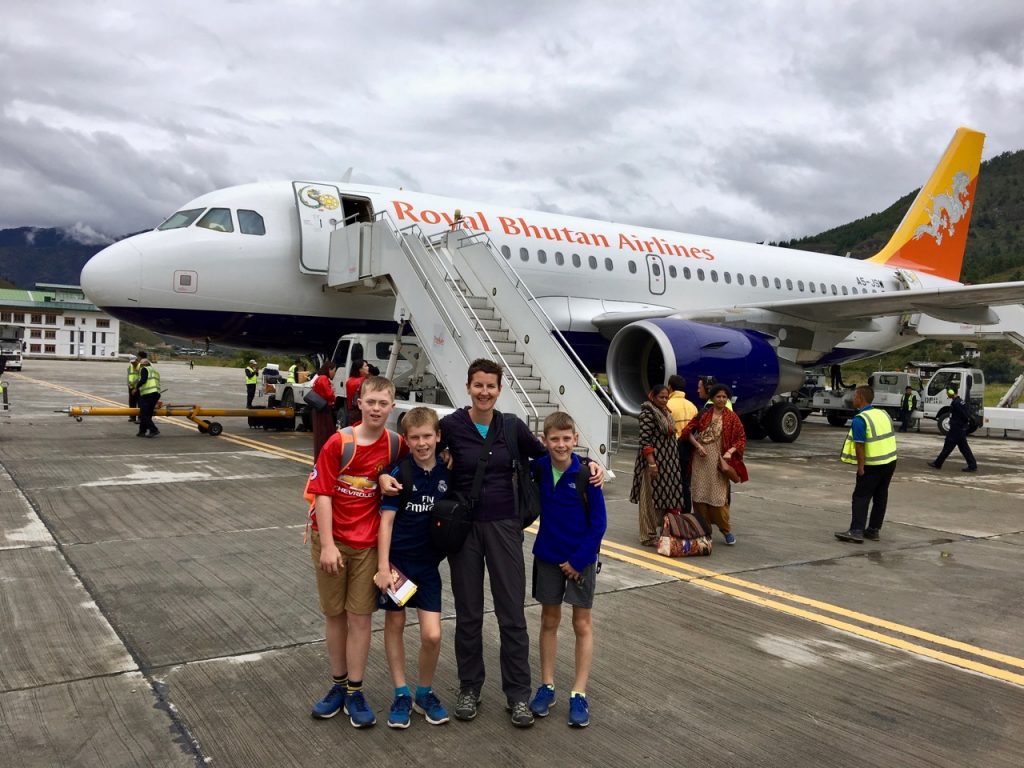
BEST THINGS TO DO IN THIMPHU
Thimphu is the capital city of Bhutan and well worth spending a couple of days exploring. Thimphu’s claim to fame is that it’s the only capital city in the world without traffic lights!
1. VISIT THE NATIONAL MEMORIAL CHORTEN
This Tibetan style Chorten is for many Bhutanese the focus of their daily worship. A Chorten or Stupa is a religious focal point in the landscape, and they are believed to have a positive effect on the people who live nearby or pass through the area. Throughout the day people circumnavigate the Chorten, many carrying prayer beads. Others, mainly the older generations sit and twirl the giant prayer wheels at the entrance.
2. BUDDHA DORDENMA
The world’s largest sitting Buddha, at fifty metres high, commands the entrance into the Thimphu valley.
There are some lovely views over the city of Thimphu from up here.
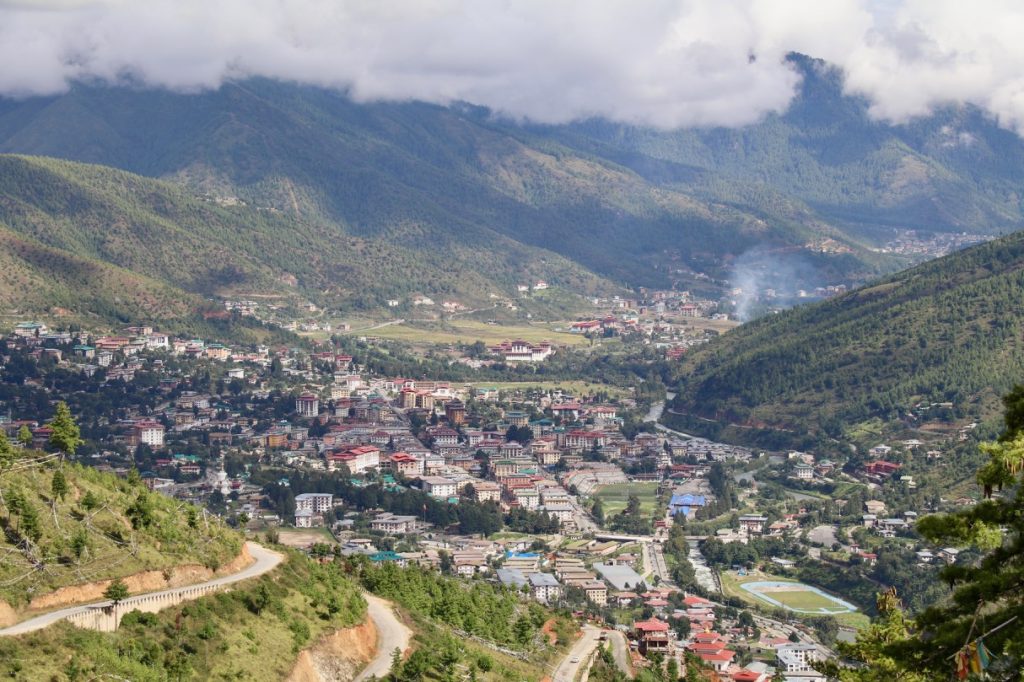
3. MEET THE NATIONAL ANIMAL: THE TAKIN
Visit the enclosure featuring the Takin, Bhutan’s national animal, something of a cross between a cow and a goat. A rather strange looking animal, and one we’d never encountered before! Nevertheless, the boys loved feeding them thorny bushes through the fence. The enclosure also features some deer and mountain goats.
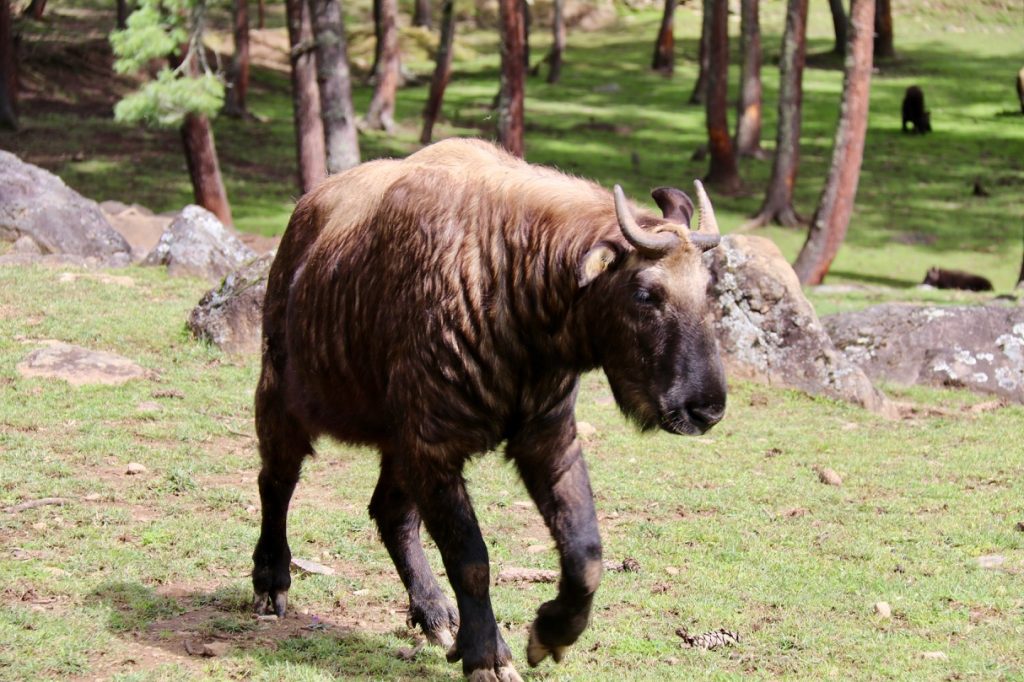
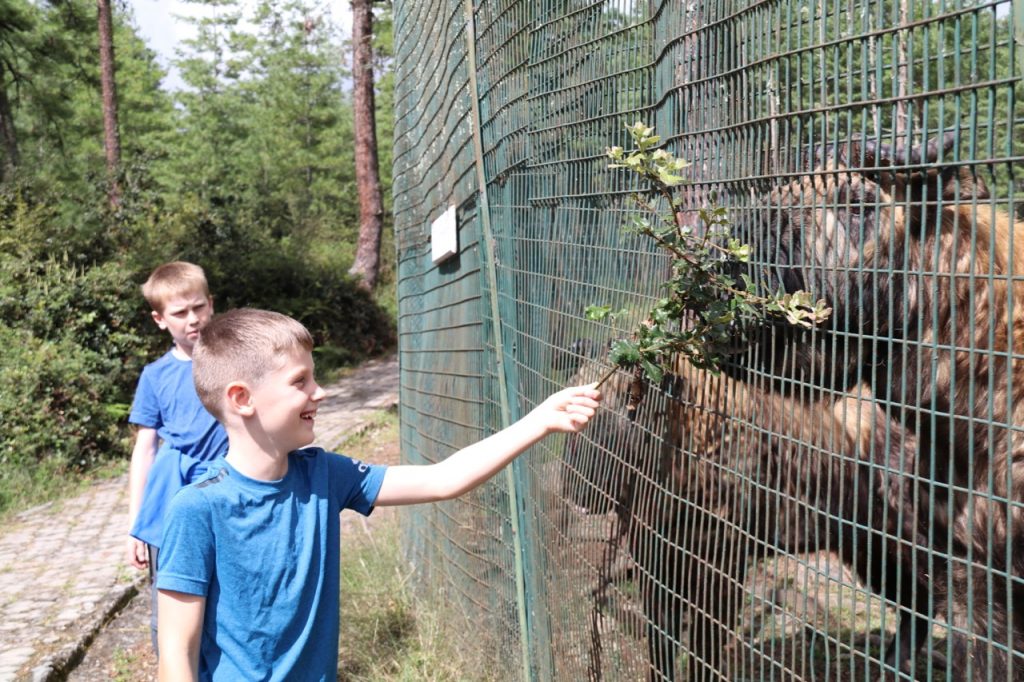
4. VISIT THE NATIONAL INSTITUTE FOR ZORIG CHUSUM (Painting School)
An opportunity to see the thirteen traditional arts of Bhutan. This institute was set up to provide instruction in these traditional arts to ensure they continue for future generations. Students practice wood carving, painting, sculpture and embroidery.
5. WATCH SOME ARCHERY AT THE ARCHERY GROUND
We were lucky enough to see some archery at the ground. Men were shooting arrows from compressed bows over a distance of 150 metres at a small target. We were all fascinated to watch the men firing their arrows dressed in traditional dress. Archery is the national sport of Bhutan.
6. GET SOME STAMPS AT THE POST OFFICE!
For something completely different visit the Thimphu Post Office to get a self/group portrait printed on a stamp. What do you think of the Williams family stamp? For a unique souvenir from Bhutan this is not to be missed. We also bought several postcards from the Post Office to send to family and friends, all posted with our very own stamp! A completely unique Bhutanese souvenir, something we’ve never seen anywhere else in the world.
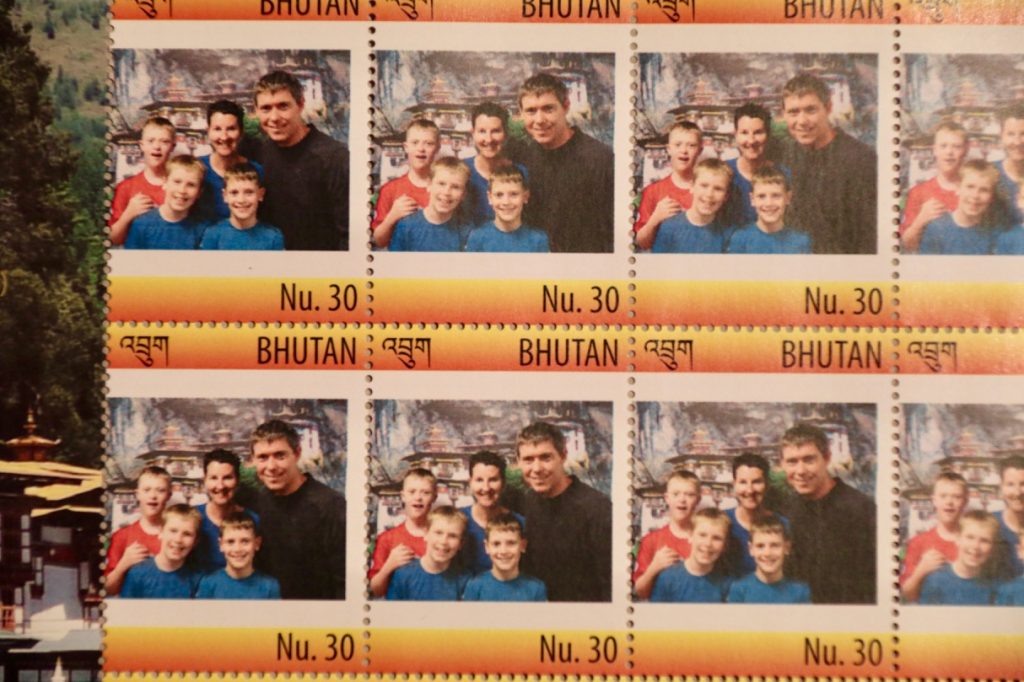
7. HIKE TO CHERI GOEMBA
Another highlight near Thimphu is Cheri Goemba, Bhutan’s first monastery. Hike up 280 metres to a monastery sitting on the mountainside with great views of the surrounding valley. Once at the monastery, with shoes removed, we went inside to find a resident monk chanting payers and banging a prayer drum. Around the monastery are meditation caves where monks have to spend 3 years, 3 months, 3 weeks and 3 days quietly meditating without seeing anyone but close family.
8. WANDER AROUND THE WEEKEND MARKET
The local farmers market is open from Friday to Sunday. We visited the market late on a Sunday morning. There are the usual fruits and vegetables as well as some more unique Bhutanese products – yak cheese, yak sausage and many different types of incense.
9. GET A LESSON IN BUDDHISM AT TRASHI CHHOE DZONG
Built as a fortress to house both monks and civil servants in the 17th Century, it still has the same dual religious and political function today. The sturdy white walled structure opens onto a large courtyard, surrounded by buildings with impressive architecture. We were lucky to see many monks going about their daily business in Thimphu Dzong.
10. SPIN SOME PRAYER WHEELS
We spun prayer wheels everywhere we went in Bhutan, but what actually are prayer wheels and what is their significance? In Buddhism, a prayer wheel is a hollow metal cylinder, often beautifully embossed, mounted on a rod handle and containing a tightly wound scroll printed with a mantra. Prayer wheels come in many sizes: they may be small, attached to a stick, and spun around by hand, medium-sized and set up at monasteries or temples, or very large and continuously spun by a wind or water mill.
Inside each prayer wheel is a scroll with mantras written on it, spinning the prayer wheel activates the mantras. Prayer wheels should only be spun in a clockwise direction. Something Flynn found tricky, although a good lesson in clockwise and anti-clockwise! Spinning these wheels brings good luck, so we spun them at every opportunity.
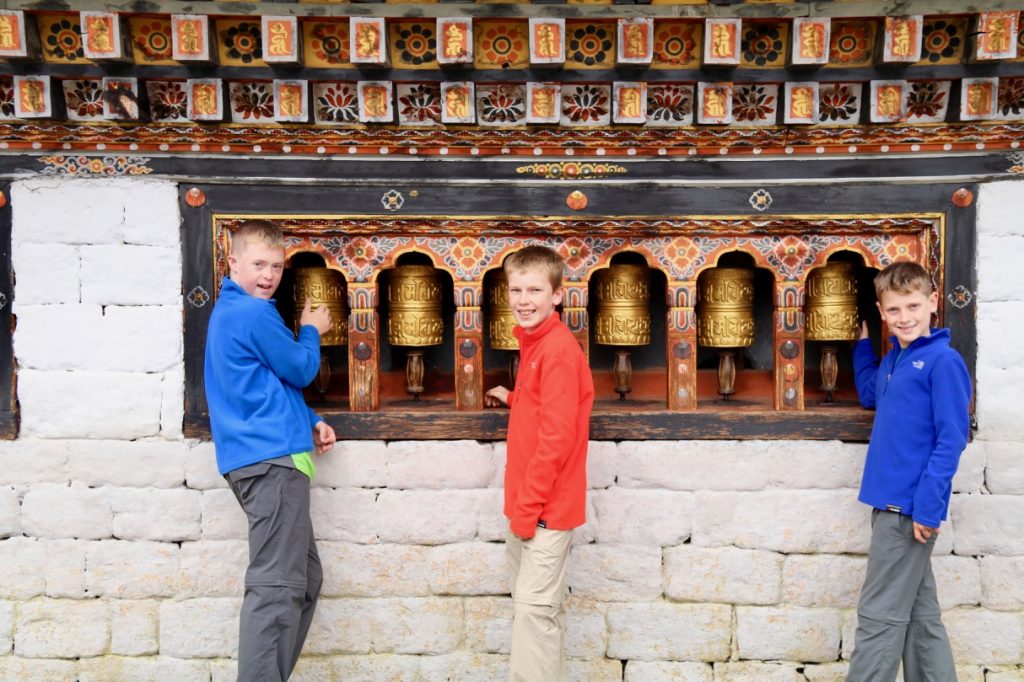
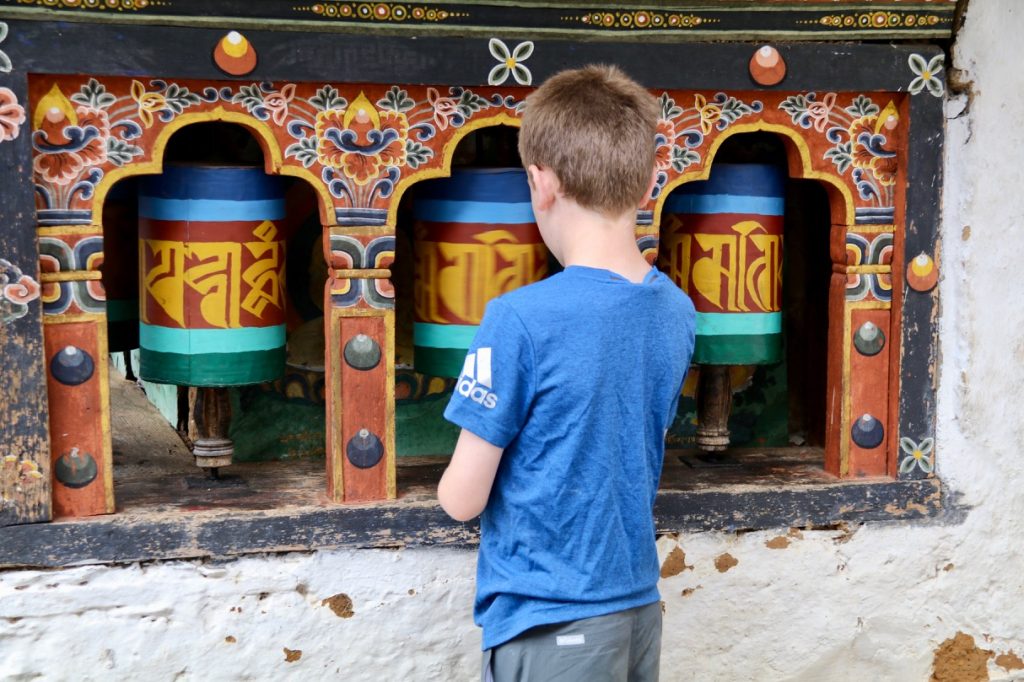
WHERE WE STAYED AND ATE
We stayed at the Hotel Pedling in central Thimphu. Rooms are basic but comfortable. Thimphu seems to have a big problem with dogs barking at night so if you are a light sleeper it would be worth bringing some ear plugs.
We ate a lot of traditional food in Bhutan. Lunch and dinner would consist of red rice (yes it really is red), noodles or pasta, chicken or beef, vegetables, and green chillies cooked with cheese. The food can be spicy, and the Bhutanese people eat chillies as a dish, not just as a seasoning.
Two restaurants in Thimphu that provided a welcome change from the traditional food were:
The Seasons Pizzeria. A great pizza restaurant that was packed with people the night we ate there.
Zombala 1 & 2. Known to serve the best momo’s in town. We ate lunch at Zombala 2 and the momo’s were fantastic, fried and steamed with beef, vegetables and cheese.
TRAVELLING IN BHUTAN
There is a daily fee involved in travelling in Bhutan. At $250 per day it can appear an expensive country to visit. However, this fee covers everything including transport, accommodation, meals, a driver and guide. Our time in Bhutan was organised by the local travel company Bridge to Bhutan, who we would thoroughly recommend. They organised our flights, itinerary, accommodation and provided a driver and guide throughout our stay. You will be accompanied throughout your time in Bhutan by a local guide.
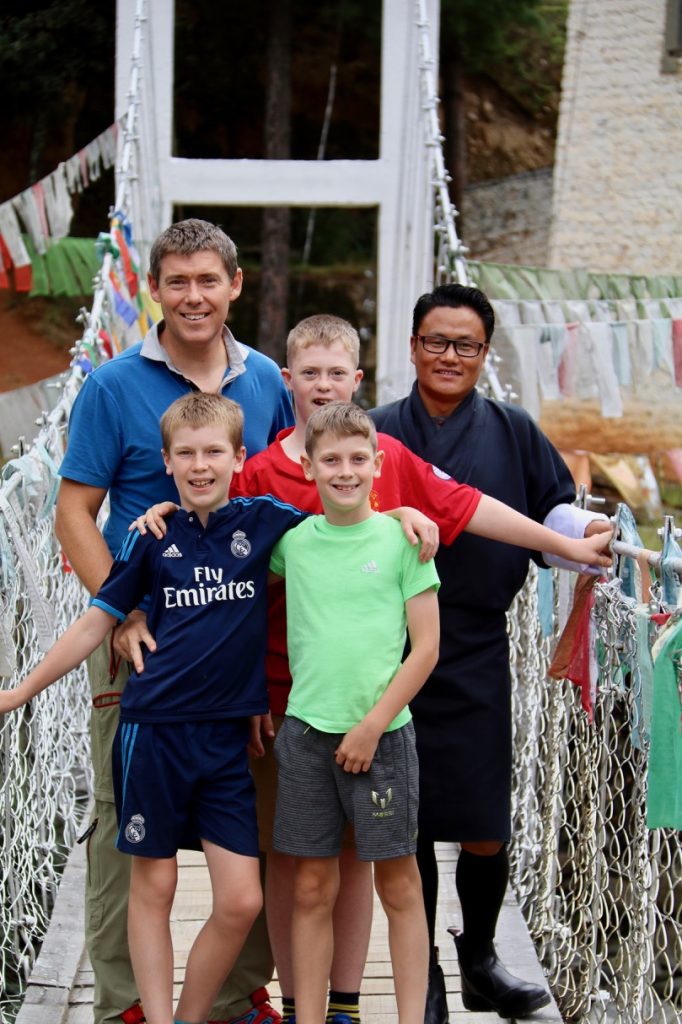
FOR MORE ON BHUTAN READ:
One Week Bhutan Itinerary with Children
Have you visited Bhutan? Do you have any recommendations of things to do in Thimphu?
Any post on this site may contain affiliate links which earn us a small commission at no additional cost to you.
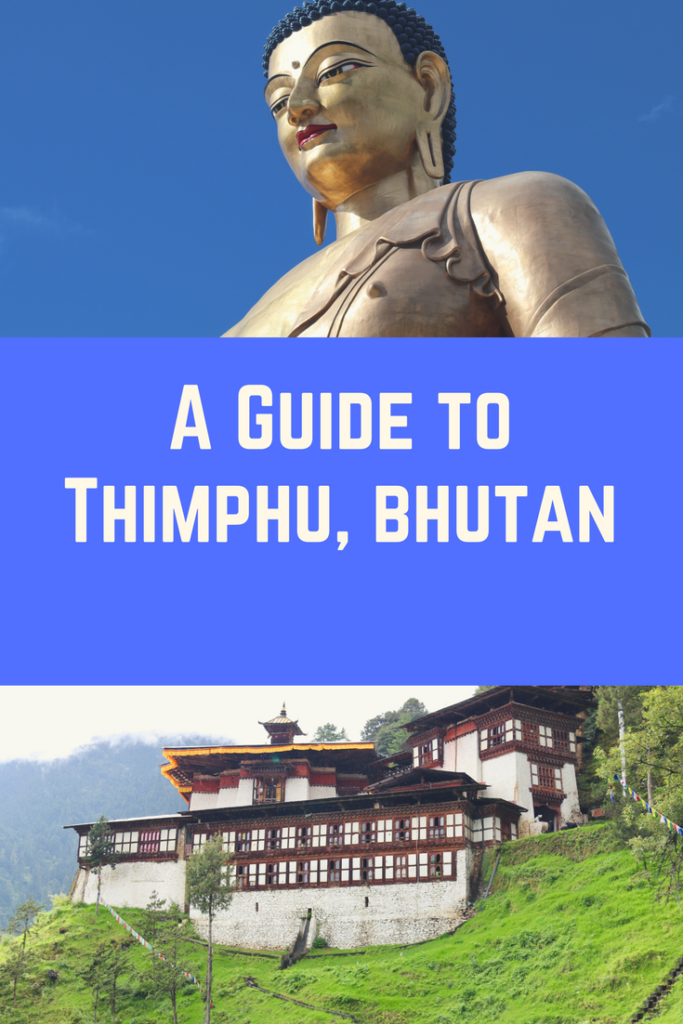

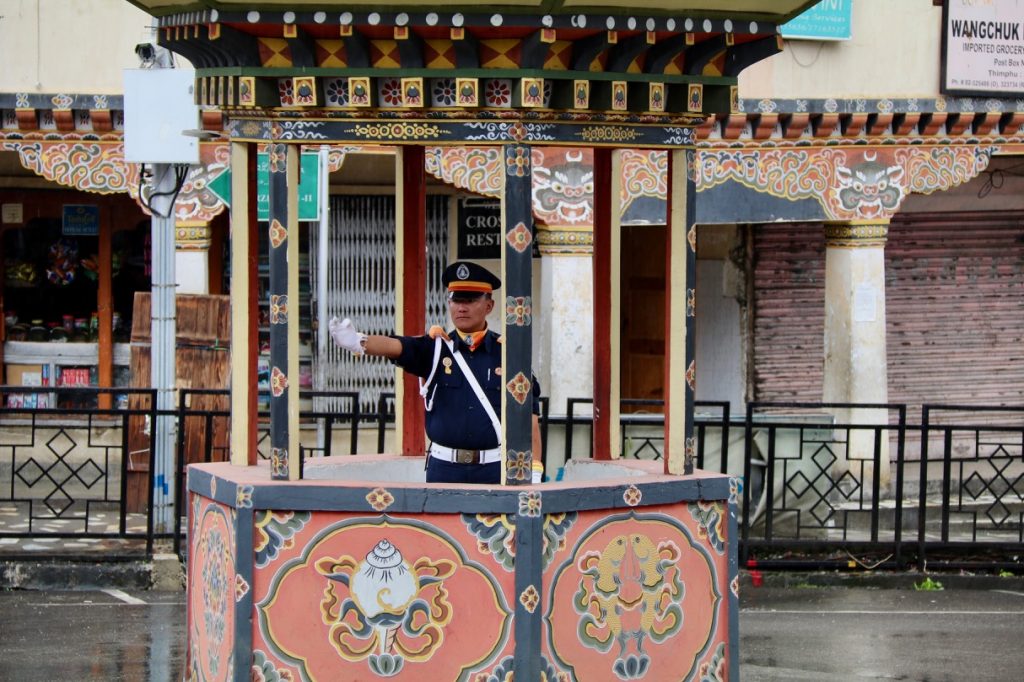
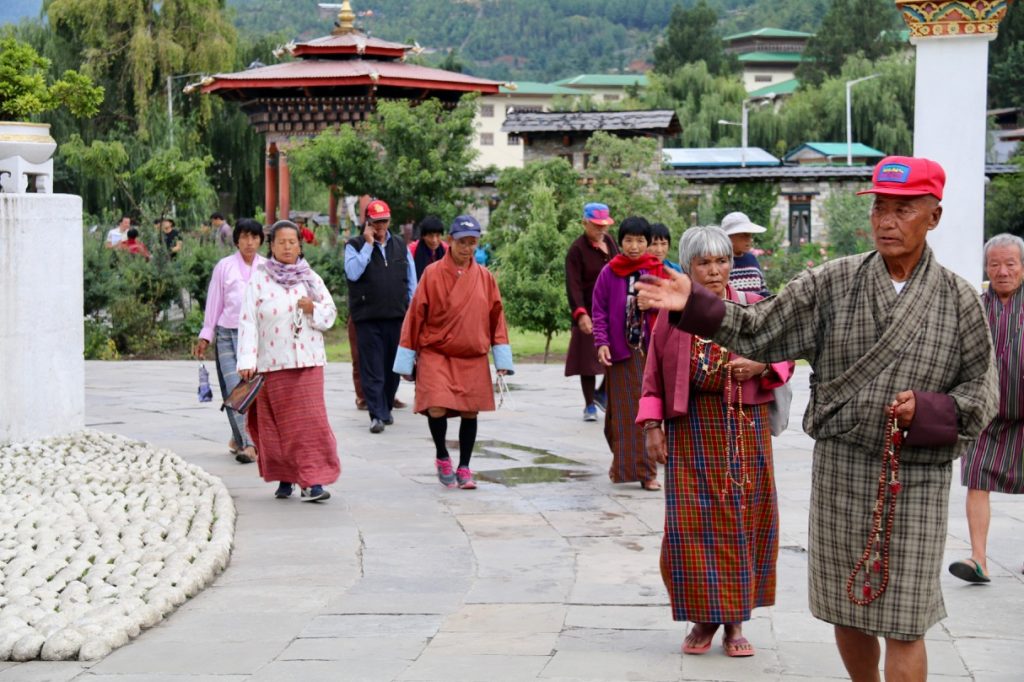
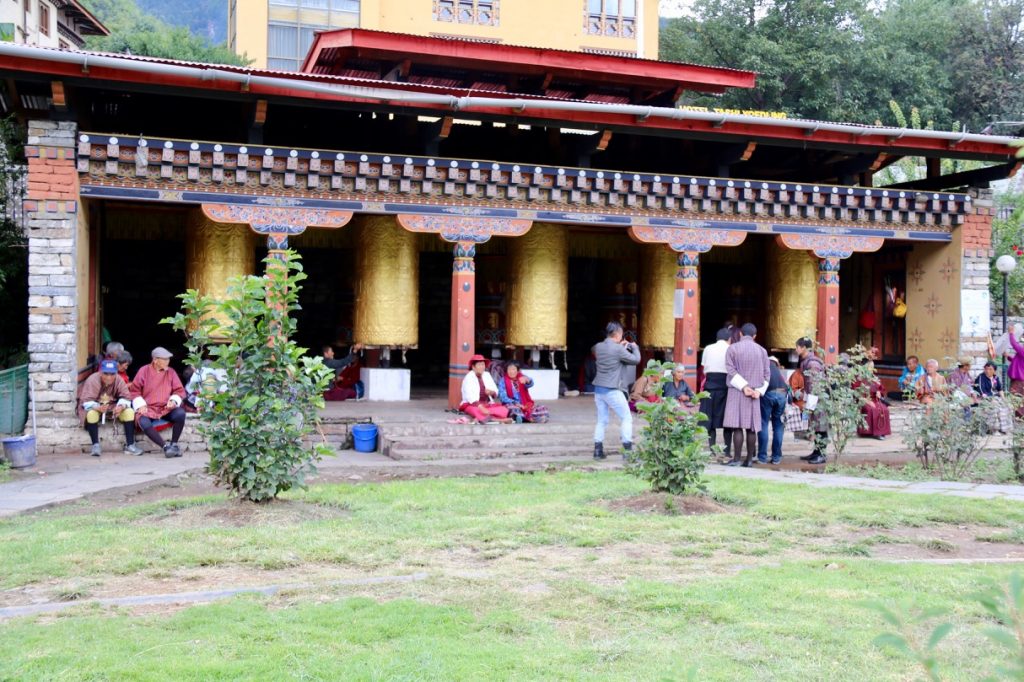
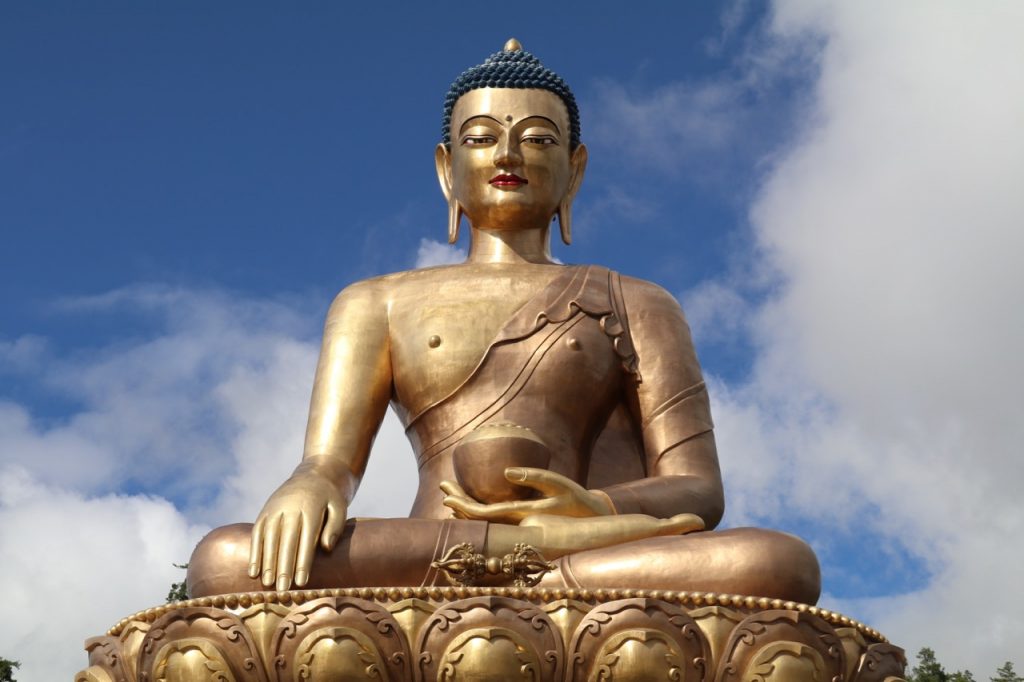
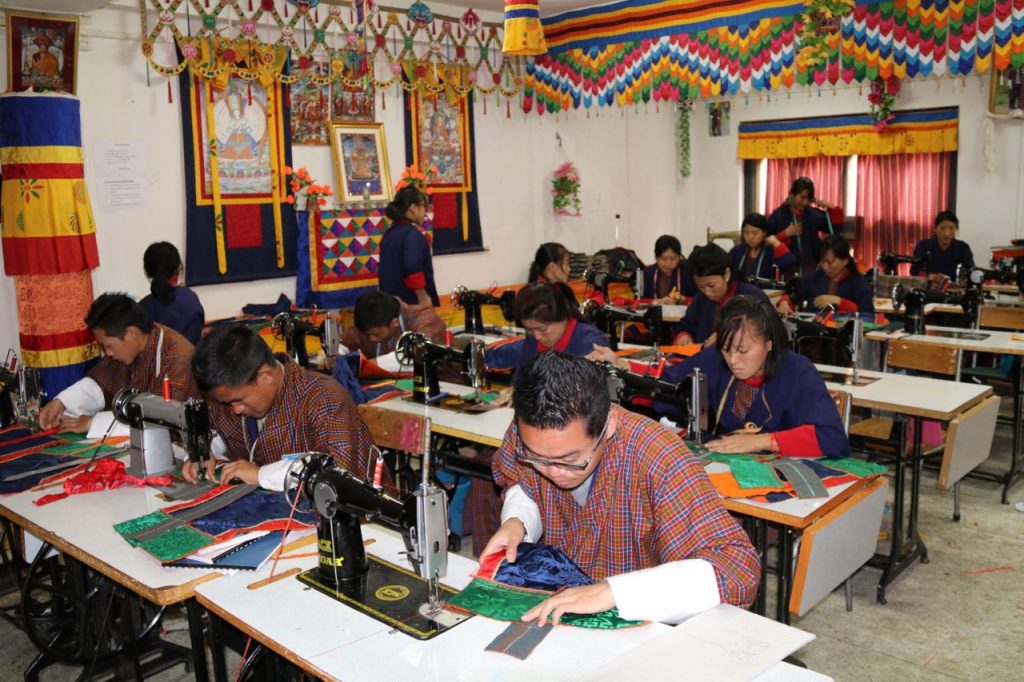
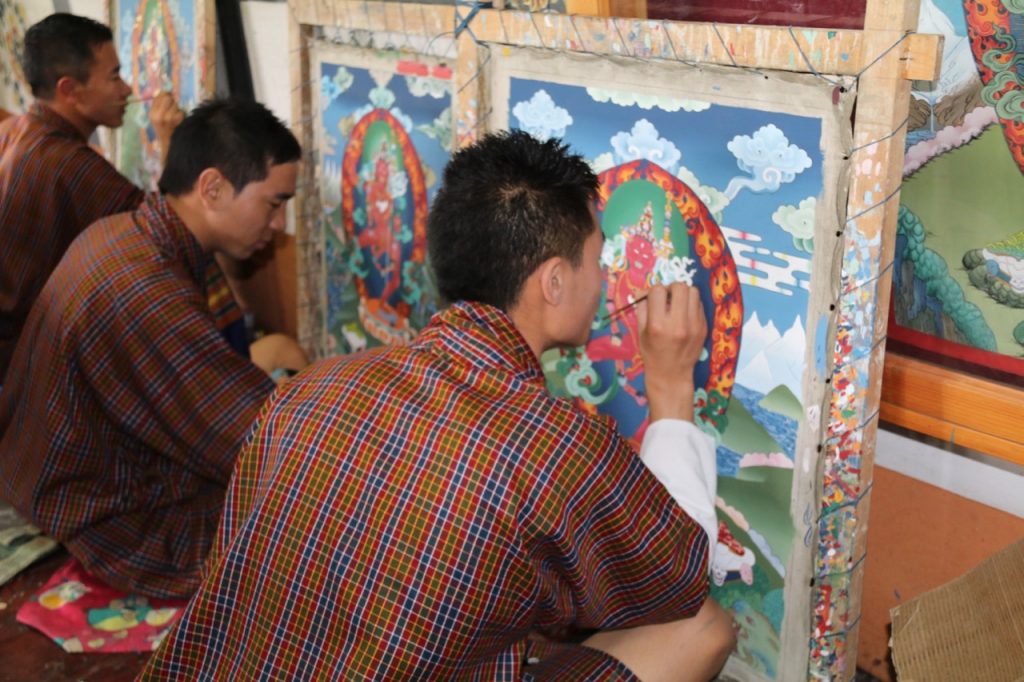
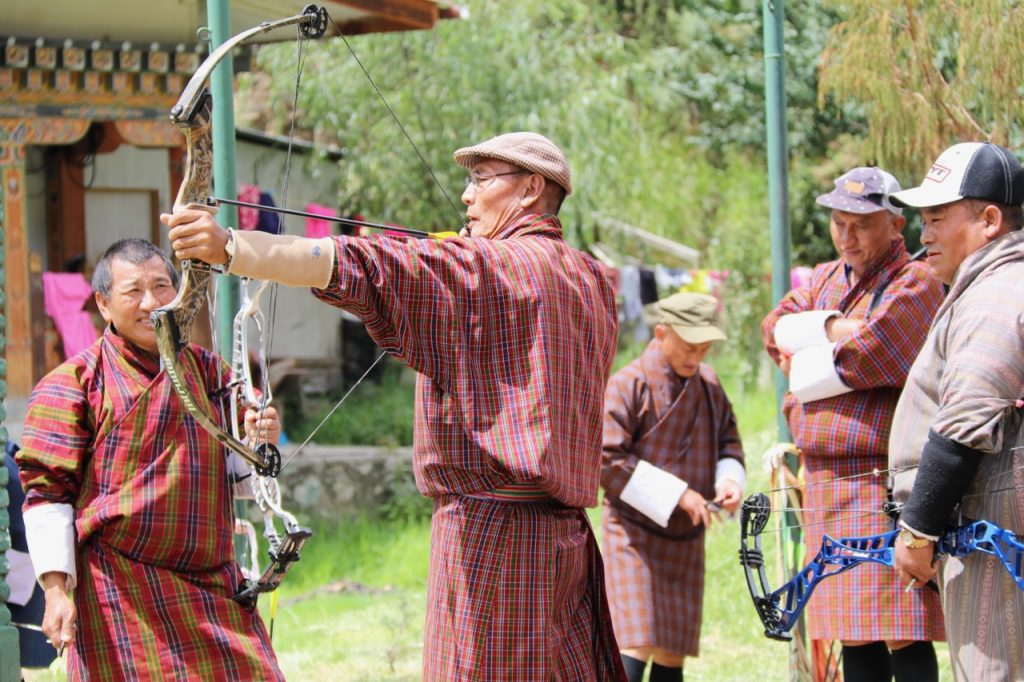
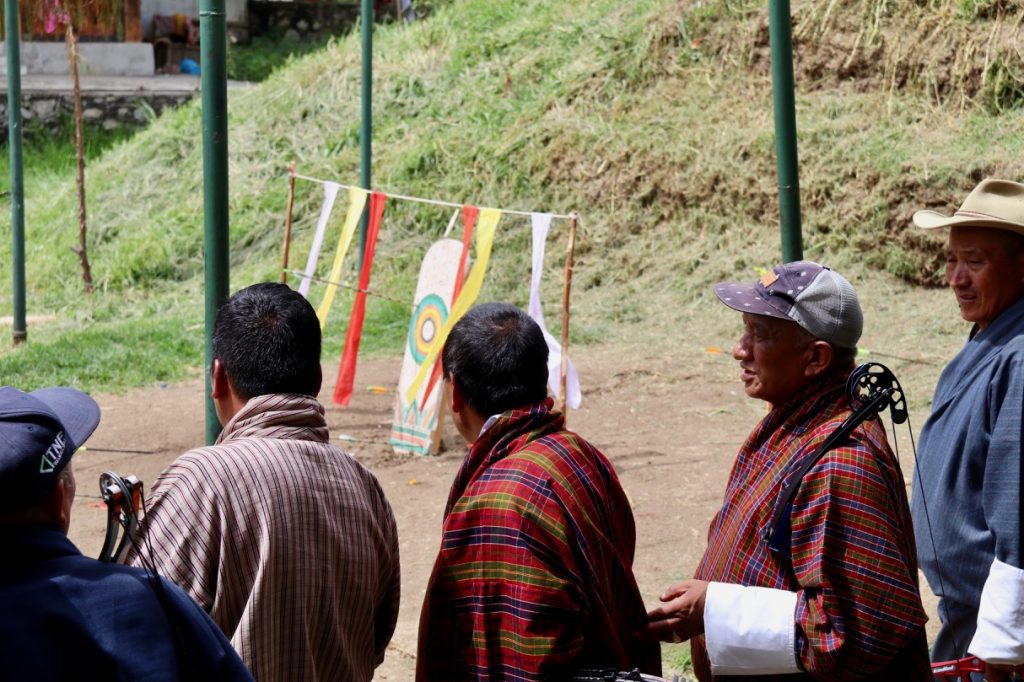
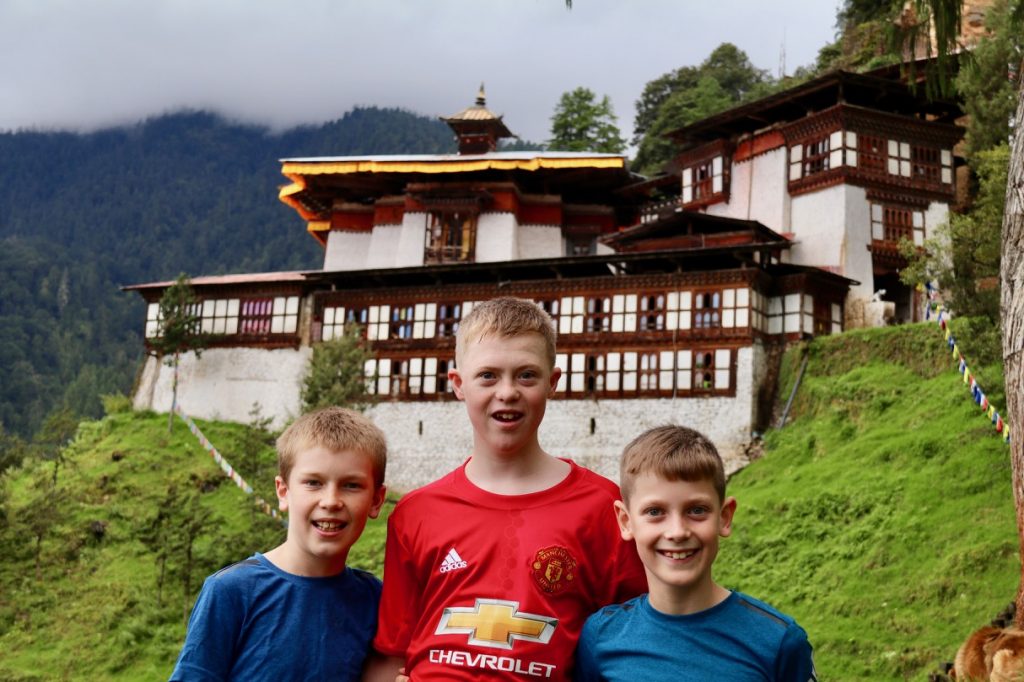
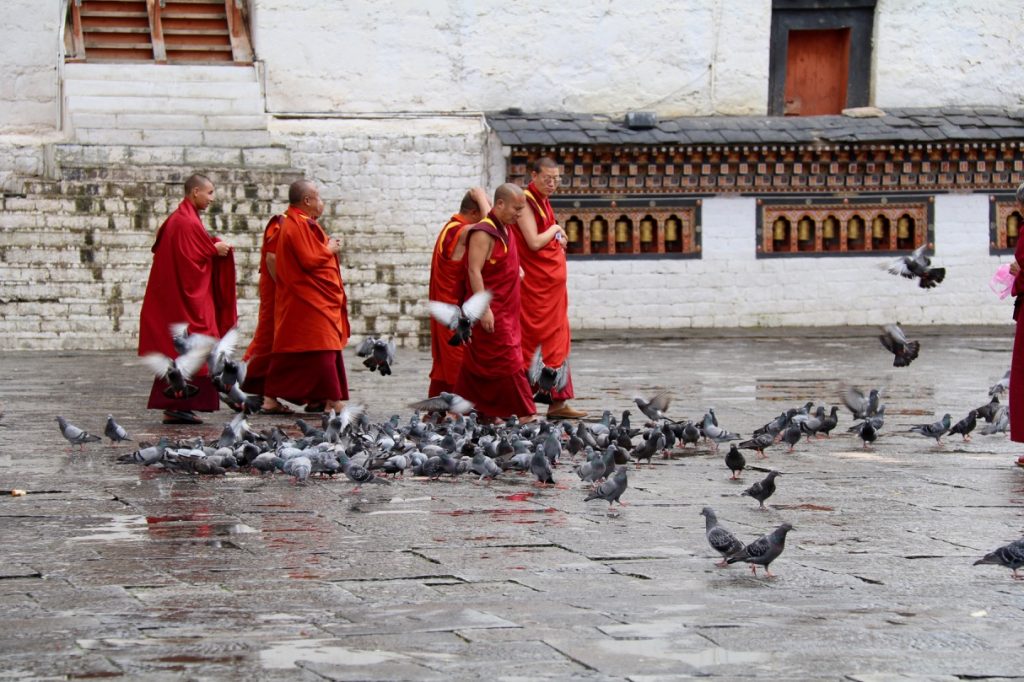
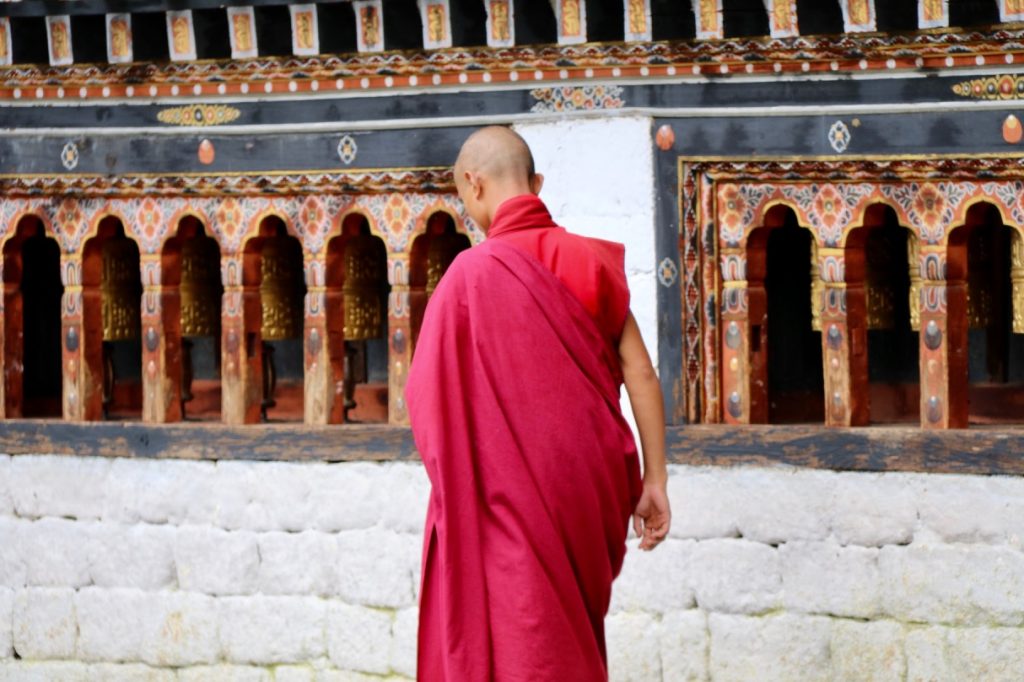
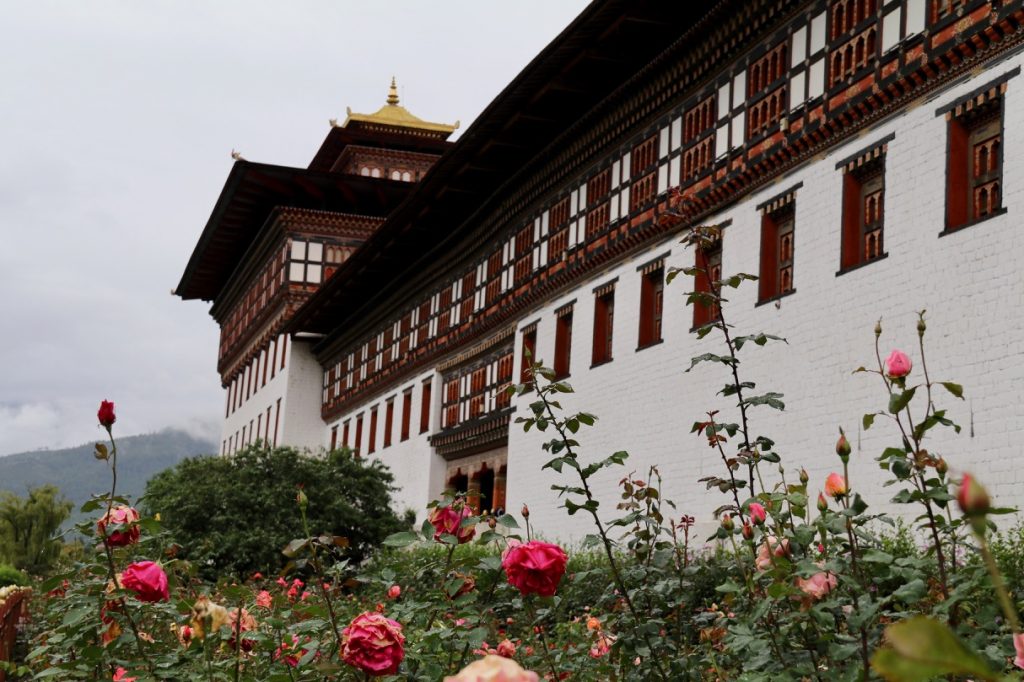
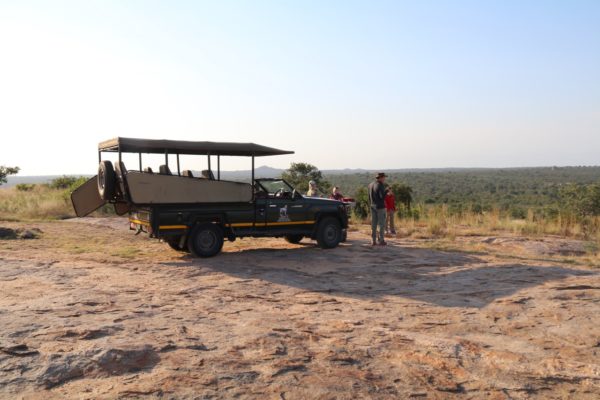
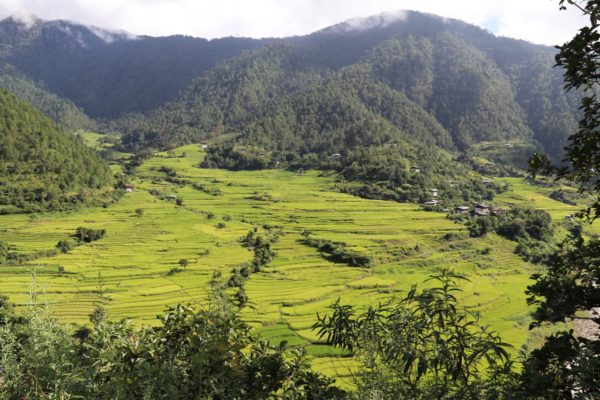
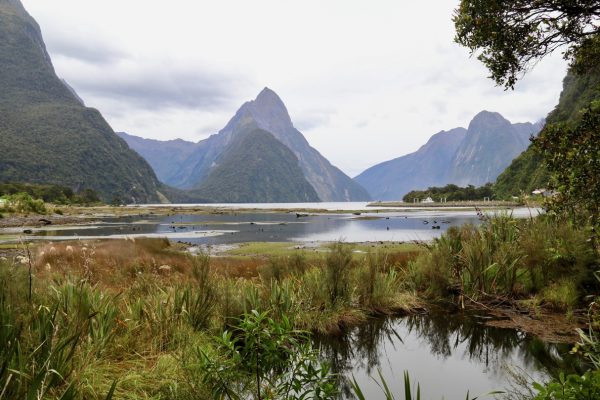
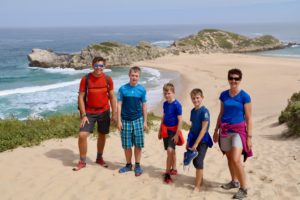
1 Comment.
This content is really interesting. I have bookmarked
it. Do you allow guest post on your blog ? I can provide high quality posts for you.
Let me know.